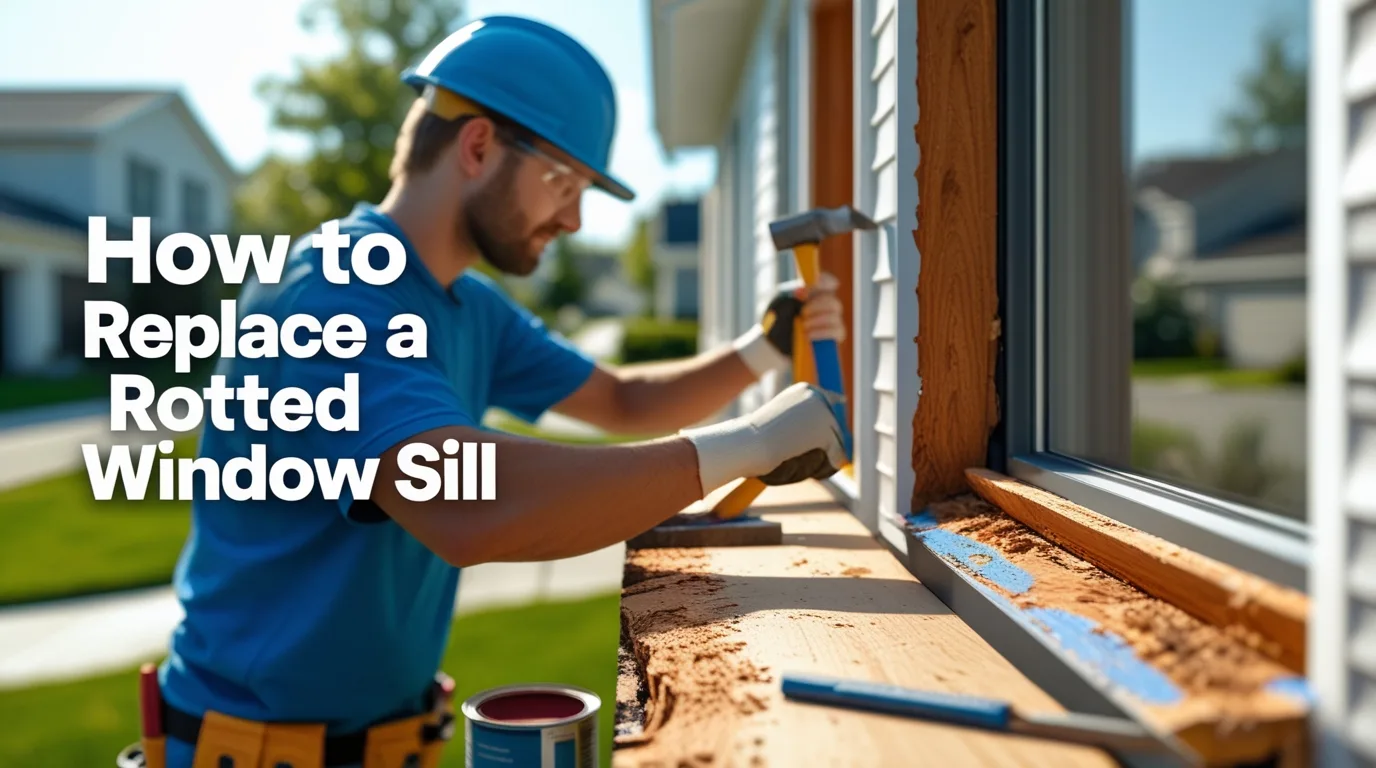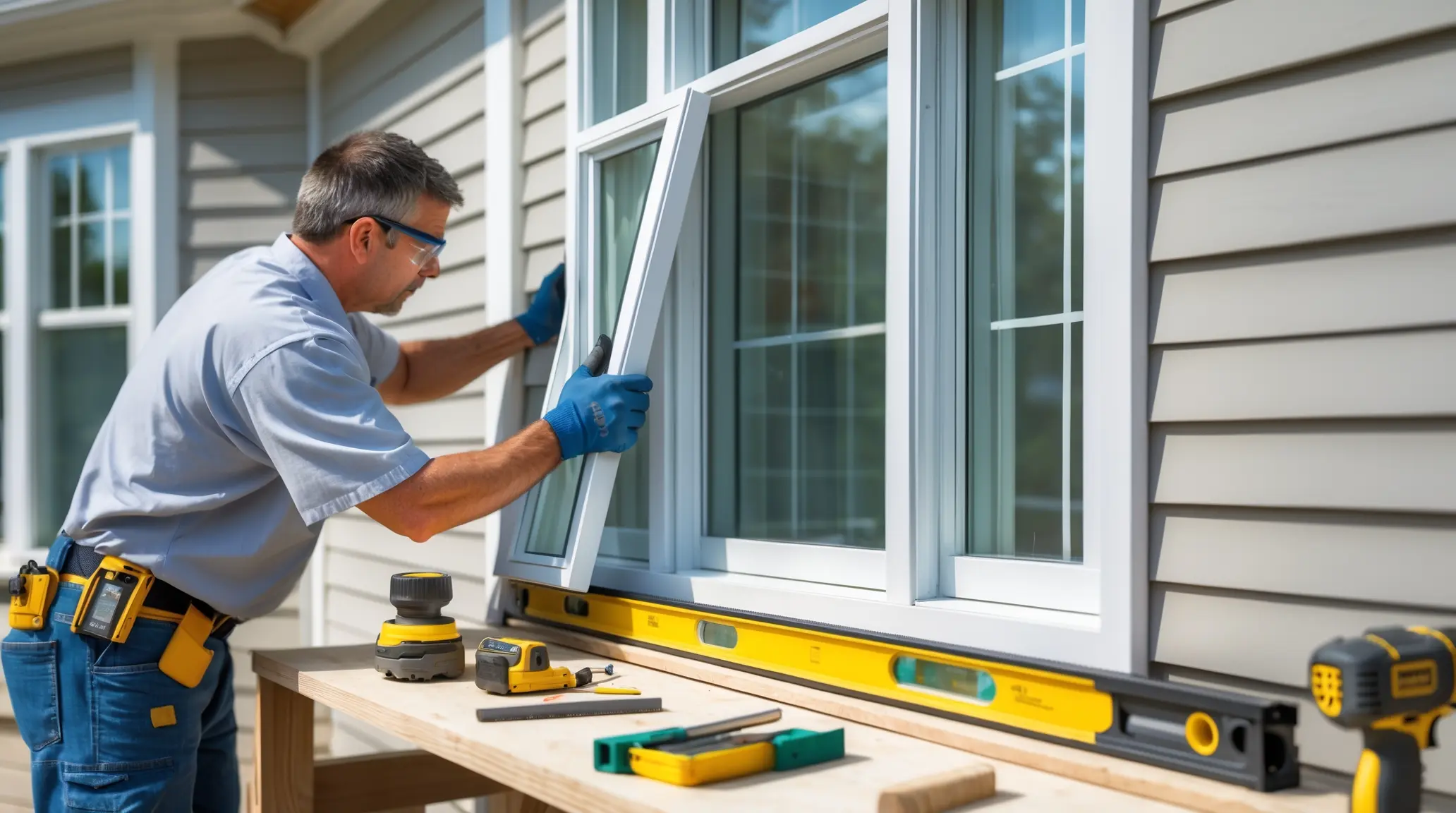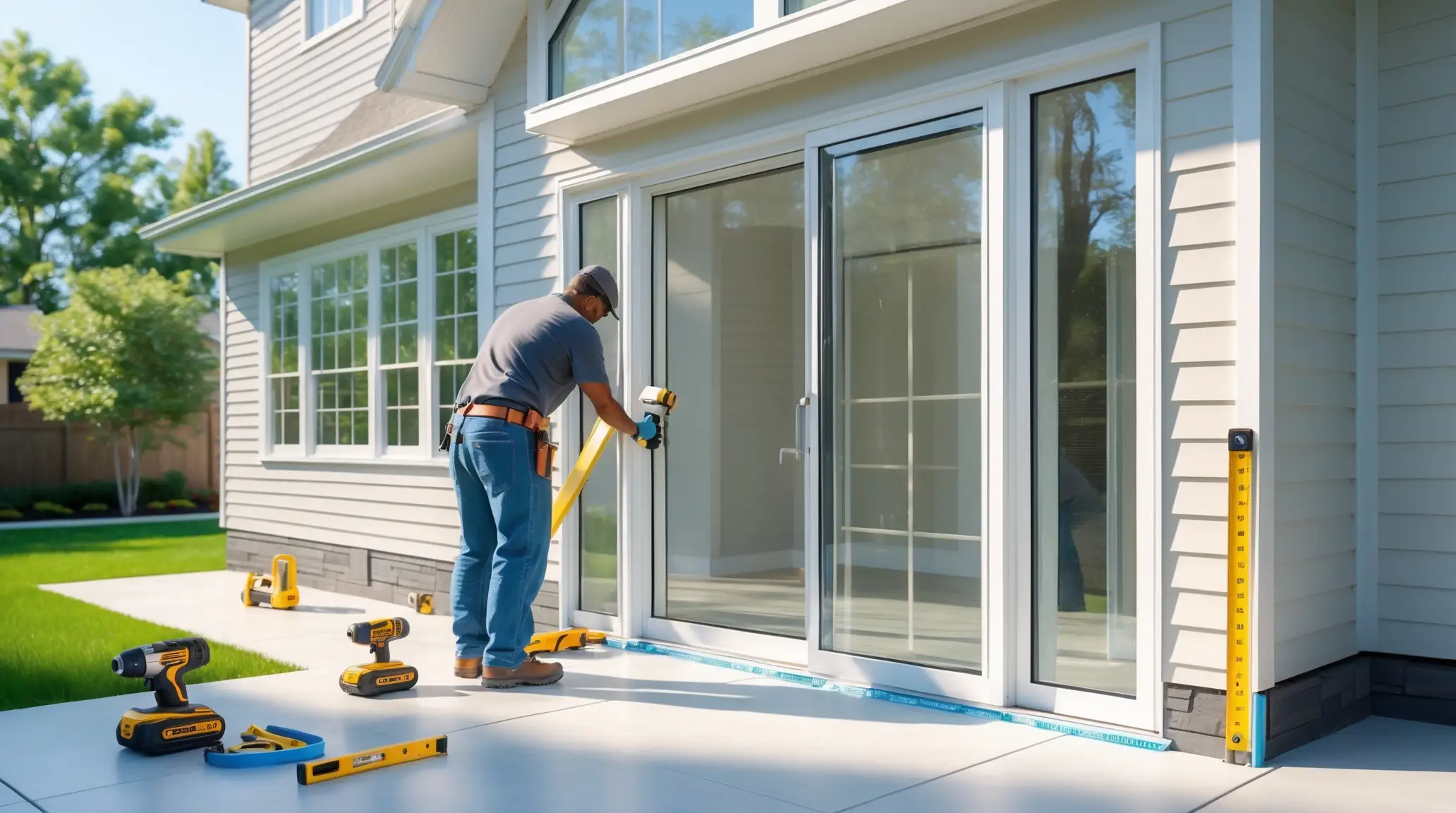What Is a Window Sill and Why It Matters to Your Home
A window sill is the bottom part of a window. It sits flat, like a small shelf, at the bottom of the window frame. You might rest a flowerpot on it or notice water drops there after it rains. But a window sill does more than just look nice. It helps keep water out and adds strength to your window.
Over time, if water keeps sitting on it or if paint chips off, the window sill can start to rot. This is called a rotted window sill. Learning how to replace a rotted window sill is important to keep your home safe and dry. A strong sill keeps water, bugs, and cold air from sneaking into your home.
How to Spot a Rotted Window Sill Before It Gets Worse
A window sill that is starting to rot can look like it has small cracks or soft spots. If you press down and the wood feels spongy, that’s a sign it’s damaged. Paint might also peel off or bubble. Sometimes, you can see mold or dark stains.
If you see these signs, you may be looking at a rotting window sill. It’s best to fix it early so it doesn’t spread to other parts of the window or the wall.
Common Causes of Rotten Window Sills
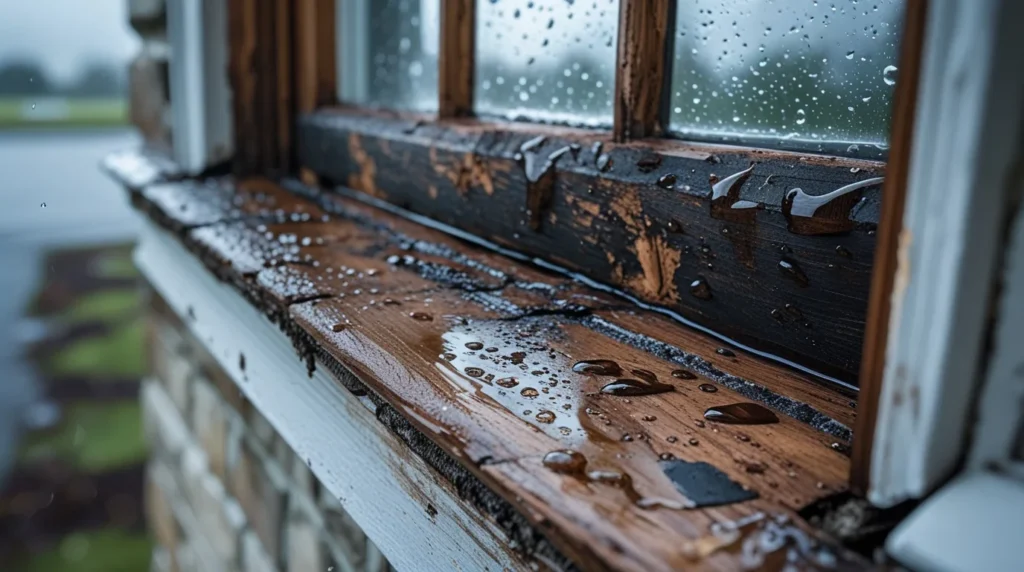
Many things can cause a window sill to rot. One big reason is water. Rainwater or melting snow can sit on the sill if it doesn’t drain properly. If the paint on the sill peels off, water can soak into the wood.
Another reason is old age. Wood that is many years old can start to break down. Also, if your windows were not installed correctly, the sill might have gaps where water gets in.
If your exterior window sill peels every year, that’s a sign it may not be sealed right. Over time, this can cause a rotten window sill replacement to be needed.
Signs You May Need a Rotted Window Sill Replacement
If your window sill is soft, cracked, or crumbly, it may be time for a replacement. You might notice paint falling off, or bugs coming in through tiny holes.
Other signs include:
- Wood that feels soft when you press on it
- Moldy or musty smells
- Gaps between the window and sill
- Drafts or cold air getting through
If you see any of these things, a replacing rotted window sill job is likely in your future.
Interior vs. Exterior: Where Window Sill Damage Happens First
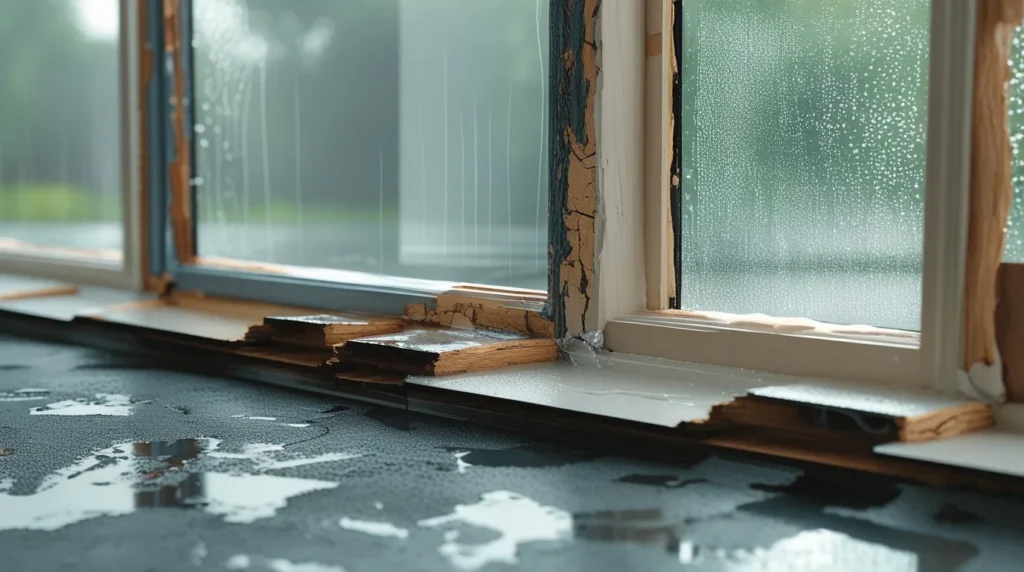
Damage often starts on the outside. Rain, snow, and sun hit the exterior sill every day. Over time, that can wear it down. If the exterior gets damaged and is not fixed, water can get inside the house. Then the interior window sill can also begin to rot.
Sometimes, the damage starts inside because of things like water leaks or too much indoor moisture. But usually, it’s the exterior window sill that gives you problems first.
That’s why it’s smart to regularly check both inside and outside. This helps you catch damage early and stop the problem before it gets bigger.
Repair or Replace? What to Do When Your Window Sill Starts to Rot
If only a small part of your sill is rotted, you might be able to repair it. You can use wood filler or epoxy to patch up small holes or cracks. This works well for tiny spots.
But if most of the sill is soft or falling apart, it’s time to replace the whole thing. A repair won’t last long if the damage is big. A full rotted window sill replacement gives you peace of mind. It also keeps your window safe and sturdy.
When in doubt, ask a pro. Austin Window Pros can help you decide if a fix is enough or if you need to start fresh.
Step-by-Step: How to Replace a Rotted Window Sill
- Check the damage. Make sure the rot is not just on the surface. Use a screwdriver to poke the wood and see how deep the damage goes.
- Remove the old sill. Use a pry bar or chisel to gently lift the rotted sill away from the window frame. Be careful not to damage the nearby wall or trim.
- Clean the area. Get rid of any leftover rot, dirt, or mold. Sand down rough edges.
- Measure and cut new wood. Use the old sill as a guide. Cut a new piece of wood to the same shape and size.
- Prime the wood. Before installing, coat the new sill with primer for exterior window sills. This helps protect it from water.
- Install the new sill. Fit the new piece into place and secure it with nails or screws.
- Seal the edges. Use caulk to fill any gaps around the sill. This helps keep water out.
- Paint the sill. Finish with outdoor paint to protect the wood and match your window.
Now you know how to replace a rotted window sill safely and properly.
Replacing a Rotted Window Sill on the Exterior of Your Home
Exterior sills take the most damage. That’s why replacing a rotted window sill on the outside is so important. Start by checking the paint. If it’s flaking, that could be hiding damage underneath.
Then check the wood. If it feels soft or crumbly, it’s likely time to replace it. The steps for how to replace rotted window sill exterior parts are the same as above, but be sure to use weatherproof materials. Always use outdoor-grade primer and paint.
Use stainless steel nails or screws so they don’t rust over time. Once you’re done, test the sill with water. Spray a little to make sure nothing leaks inside.
Tools and Materials Needed for Rotted Window Sill Replacement
You’ll need:
- Pry bar or chisel
- Hammer
- Screwdriver
- Saw (hand saw or circular)
- Measuring tape
- Wood (treated or rot-resistant)
- Primer for exterior window sills
- Caulk
- Outdoor paint
- Sandpaper
Optional:
- Safety goggles
- Gloves
- Wood filler (for small repairs)
Having the right tools helps make the job safe and easy. If you don’t have all of them, you can rent or borrow most from a hardware store.
What to Expect: Window Sill Repair Cost vs. Replacement Cost
Fixing a small spot with filler or epoxy is cheap. You might spend $10 to $30. But if you need a full replacement, the window sill replacement cost could be higher.
Most people spend between $100 and $300 for a full window sill replacement. The price depends on the size of the window, type of wood, and if you hire a pro.
Interior sills are often cheaper than exterior ones. That’s because outdoor work needs special materials and protection. If you also need to replace window stool or casing, that adds to the cost.
Don’t forget: if you delay fixing a rotting sill, it can lead to wall damage. That repair could cost hundreds more. So it’s better to act early.
Expert Help in Austin: When to Call Austin Window Pros
Sometimes, a window sill looks simple to fix, but hidden damage makes it harder. If you’re unsure, or if you’ve tried a repair and it didn’t last, it’s time to call in the experts.
Austin Window Pros knows what to look for and how to fix it right the first time. Whether it’s a small rot spot or a full rotted window sill replacement, they’ve got the tools and skills to do the job right.
If you’re in Austin and need help, don’t wait until things get worse. One call can save you time, money, and stress.
Need help fixing your window sill? The team at Austin Window Pros is here for you. We make sure your windows stay strong, safe, and ready for any weather. Reach out today and let us take care of the rot, so you can enjoy peace of mind tomorrow.

